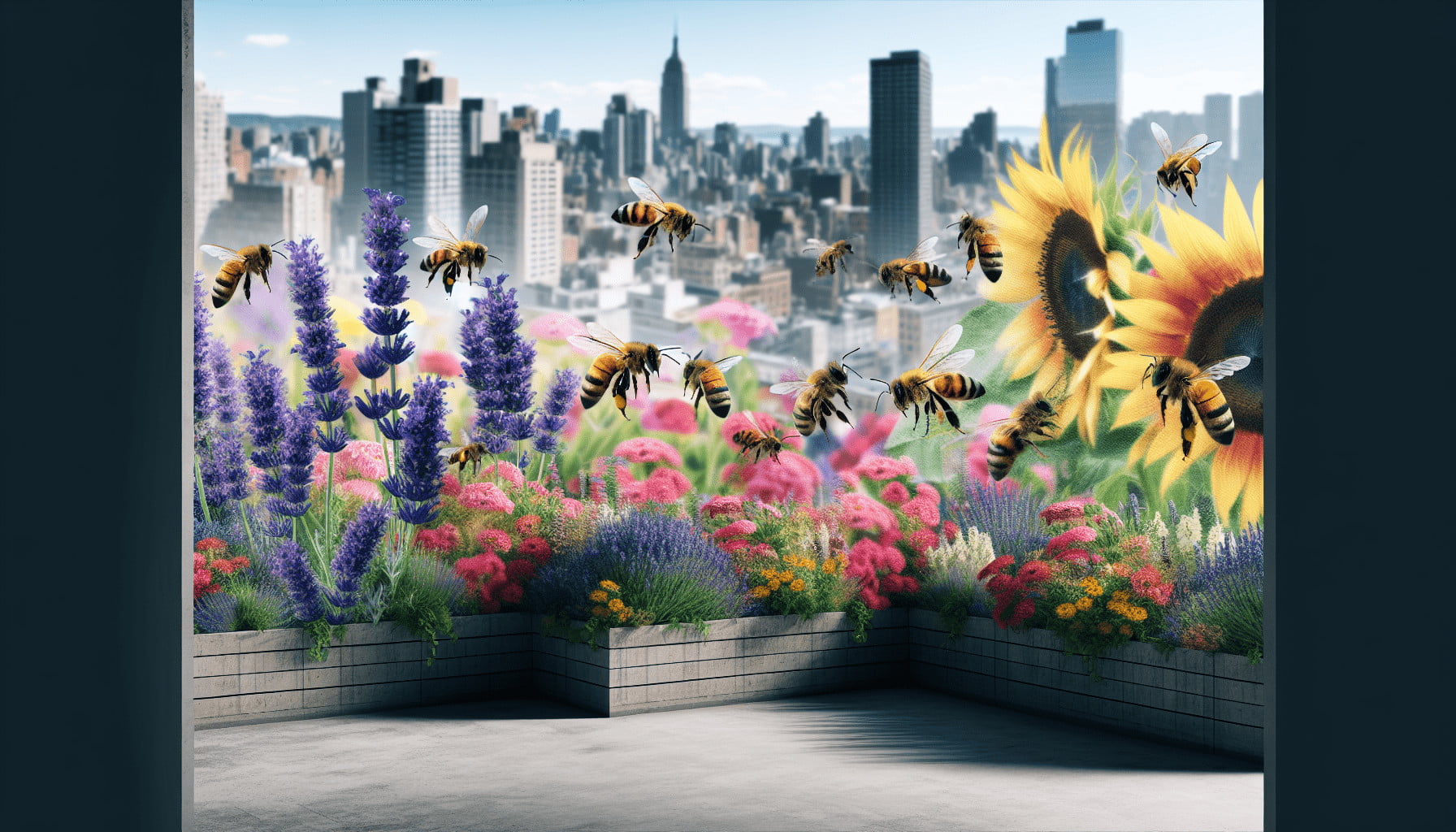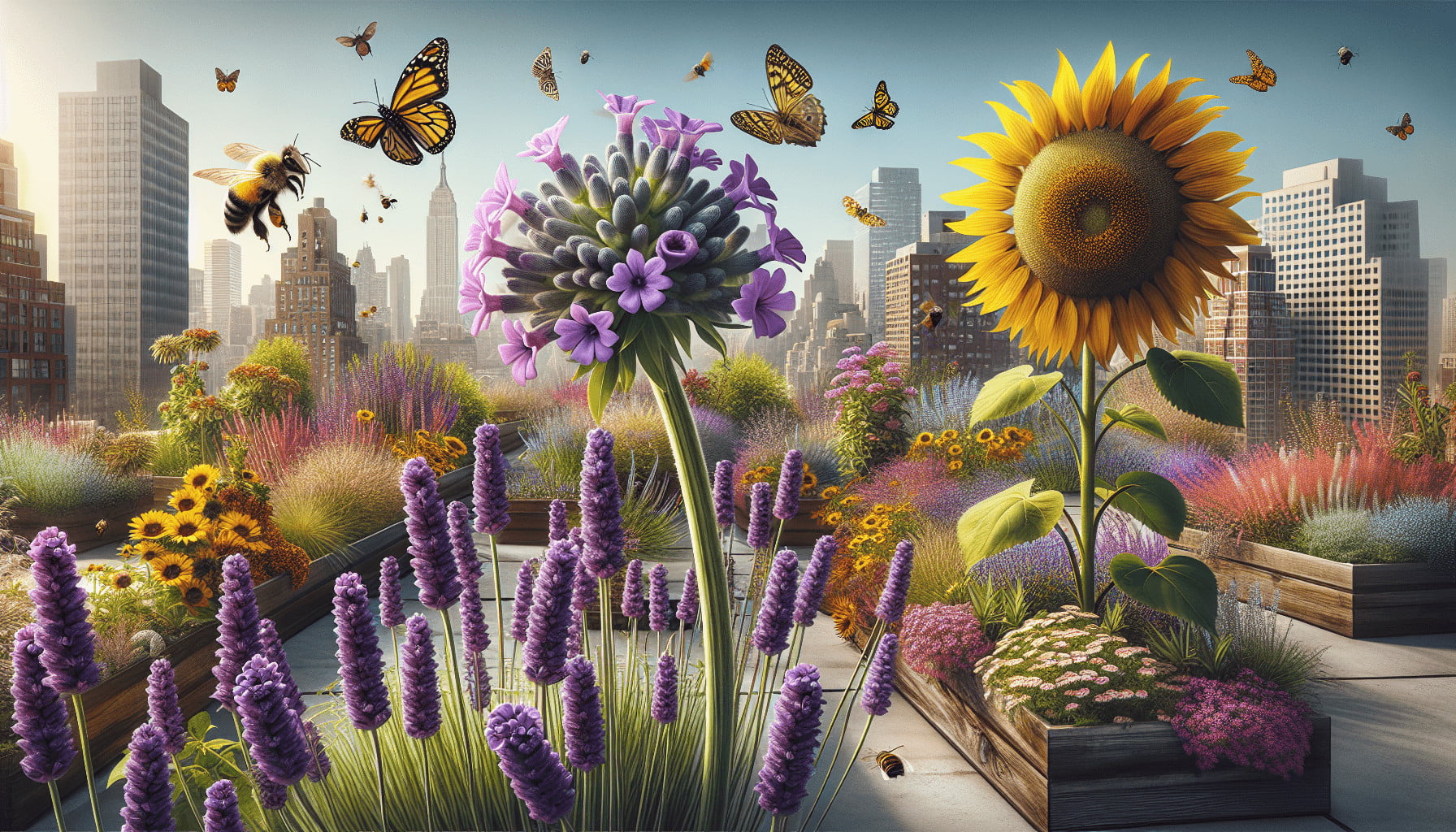Are you looking to enhance your rooftop garden while also helping the environment? In this article, you will learn all about attracting pollinators to your rooftop garden. By implementing a few simple strategies, such as planting native flowers and providing water sources, you can transform your urban oasis into a thriving ecosystem buzzing with life. Get ready to welcome bees, butterflies, and other essential pollinators to your rooftop garden! Have you ever wondered how you can attract pollinators to your rooftop garden? Pollinators play a crucial role in helping plants reproduce, and having them visit your garden can lead to a bountiful harvest of fruits and vegetables. In this article, we will discuss various ways you can attract pollinators to your rooftop garden so you can enjoy a thriving and beautiful space filled with buzzing and fluttering visitors.
Understanding the Importance of Pollinators
Pollinators are vital for plant reproduction, as they transfer pollen from the male part of the flower to the female part, allowing the plant to produce seeds and fruit. Common pollinators include bees, butterflies, hummingbirds, and various insects. Without pollinators, many plants would not be able to reproduce, leading to a decline in plant biodiversity and food production. By attracting pollinators to your rooftop garden, you can help support these important creatures and ensure the success of your garden.
Why Pollinators Are Essential
Pollinators are essential for the reproduction of many plants, including fruits, vegetables, nuts, and seeds. Without pollinators, these plants would be unable to produce the fruits and vegetables we rely on for food. Pollination also helps maintain plant diversity, supports wildlife, and contributes to ecosystem health. By attracting pollinators to your rooftop garden, you are not only benefiting your plants but also helping to support the overall ecosystem.
Choosing the Right Plants to Attract Pollinators
One of the best ways to attract pollinators to your rooftop garden is by planting a variety of flowers, herbs, and vegetables that are known to attract these important creatures. When selecting plants for your garden, it’s essential to choose ones that provide nectar, pollen, and habitat for pollinators. By including a diverse selection of plants in your rooftop garden, you can create a welcoming environment for pollinators and encourage them to visit regularly.
Plants That Attract Bees
Bees are some of the most efficient pollinators and play a significant role in plant reproduction. To attract bees to your rooftop garden, consider planting flowers such as lavender, sunflowers, bee balm, and coneflowers. These plants are rich in nectar and pollen, making them irresistible to bees. By including bee-friendly plants in your garden, you can create a haven for these buzzing visitors.
Plants That Attract Butterflies
Butterflies are not only beautiful to look at but also essential pollinators. To attract butterflies to your rooftop garden, plant flowers like butterfly bush, milkweed, coneflowers, and zinnias. Butterflies are attracted to bright, colorful flowers with a flat surface for easy landing. By including these plants in your garden, you can enjoy the graceful presence of butterflies flitting from flower to flower.
Plants That Attract Hummingbirds
Hummingbirds are another key pollinator that can bring vibrancy and energy to your rooftop garden. To attract hummingbirds, consider planting flowers such as salvia, bee balm, trumpet vine, and columbine. Hummingbirds are drawn to tubular-shaped flowers that are rich in nectar, making these plants ideal choices for your garden. By including hummingbird-friendly plants, you can invite these tiny birds to visit your rooftop oasis.

Providing Food and Water Sources for Pollinators
In addition to planting pollinator-friendly flowers, it’s essential to provide food and water sources for the pollinators visiting your rooftop garden. Pollinators need access to nectar, pollen, and clean water to thrive and reproduce. By offering these essential resources, you can create a hospitable environment for pollinators and ensure they continue to visit your garden throughout the season.
Creating a Pollinator Buffet
To attract a diverse range of pollinators to your rooftop garden, consider planting a variety of flowers that bloom at different times of the year. This will provide a continuous source of food for pollinators and ensure they have access to nectar and pollen throughout the growing season. By creating a pollinator buffet in your garden, you can attract bees, butterflies, hummingbirds, and other beneficial insects.
Providing Water for Pollinators
Pollinators need access to clean water for drinking and bathing, especially during hot, dry weather. To provide water for pollinators, consider placing shallow dishes or bird baths filled with fresh water in your rooftop garden. Be sure to change the water regularly to prevent the growth of algae and mosquito larvae. By offering a water source for pollinators, you can help them stay hydrated and healthy while visiting your garden.
Creating Habitat for Pollinators
In addition to providing food and water for pollinators, it’s essential to create habitat that offers shelter, nesting sites, and protection from predators. By including features such as nesting boxes, bee hotels, and native plants in your rooftop garden, you can create a welcoming environment for pollinators to live and reproduce. Creating habitat for pollinators not only attracts them to your garden but also helps support their populations and overall health.
Building a Bee Hotel
Bee hotels are man-made structures that provide nesting sites for solitary bees and other beneficial insects. To attract solitary bees to your rooftop garden, consider building a bee hotel using materials like bamboo tubes, wooden blocks with holes drilled in them, and stacked wood with crevices for nesting. By providing nesting sites for solitary bees, you can increase pollination in your garden and support these important pollinators.
Planting Native Plants
Native plants are well-adapted to the local climate, soil, and wildlife in your area, making them an excellent choice for attracting pollinators to your rooftop garden. By planting native flowers, shrubs, and trees, you can provide food and habitat for local pollinators and help support their populations. Native plants also require less maintenance and watering, making them a sustainable choice for rooftop gardening.

Avoiding Pesticides and Chemicals
To attract pollinators to your rooftop garden, it’s essential to avoid using pesticides, herbicides, and other chemicals that can harm these important creatures. Many pesticides are toxic to pollinators and can have detrimental effects on their health and reproductive success. By adopting organic gardening practices and using natural pest control methods, you can create a safe and healthy environment for pollinators to thrive in your rooftop garden.
Organic Pest Control Methods
Instead of using chemical pesticides, consider using organic pest control methods to manage pests in your rooftop garden. This can include planting pest-repellent plants, using beneficial insects like ladybugs and lacewings, and hand-picking pests off your plants. By using natural pest control methods, you can keep your garden pest-free without harming the pollinators visiting your rooftop oasis.
Integrated Pest Management
Integrated pest management (IPM) is a holistic approach to pest control that combines multiple strategies to prevent and manage pest problems in your garden. This can include using cultural practices, biological controls, and least-toxic pesticides only as a last resort. By implementing IPM in your rooftop garden, you can effectively manage pests while protecting pollinators and other beneficial insects.
Maintaining Your Rooftop Garden for Pollinators
Once you have attracted pollinators to your rooftop garden, it’s essential to maintain your garden to ensure it continues to provide food, water, and habitat for these important creatures. Regularly monitoring your garden, removing weeds, deadheading flowers, and providing maintenance will help create a welcoming environment for pollinators and encourage them to visit your rooftop oasis throughout the season.
Monitoring Your Garden
Regularly monitoring your rooftop garden allows you to observe the activity of pollinators, identify any pest problems, and assess the health of your plants. Spend time in your garden watching the pollinators interact with your flowers, taking note of which plants they prefer and when they visit. By monitoring your garden, you can learn more about the habits of pollinators and make adjustments to better support them.
Weeding and Deadheading
Weeds can compete with your plants for nutrients, water, and sunlight, making it essential to keep them in check in your rooftop garden. Regularly removing weeds from your garden will help reduce competition for resources and create a cleaner, more attractive space for pollinators. Deadheading flowers also encourages plants to produce more blooms, providing a continuous source of food for pollinators throughout the season.
Conclusion
Attracting pollinators to your rooftop garden is not only beneficial for your plants but also for the overall health of the ecosystem. By planting a variety of flowers, herbs, and vegetables, providing food and water sources, creating habitat, avoiding pesticides, and maintaining your garden, you can create a welcoming environment for pollinators to thrive. Whether you have a small rooftop garden or a large rooftop oasis, you can make a difference in supporting pollinators and enjoying a fruitful and vibrant space filled with buzzing and fluttering visitors. Happy gardening!
